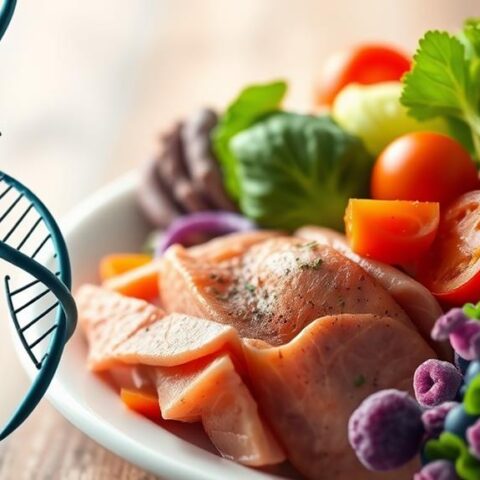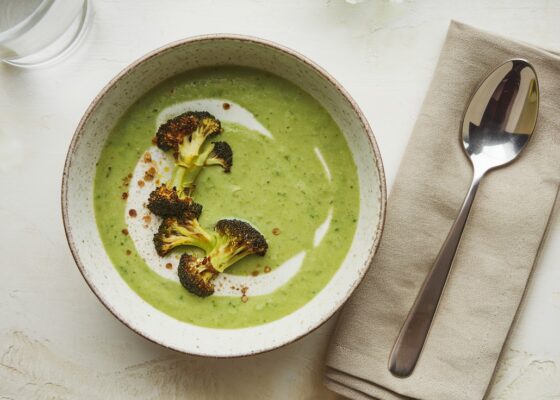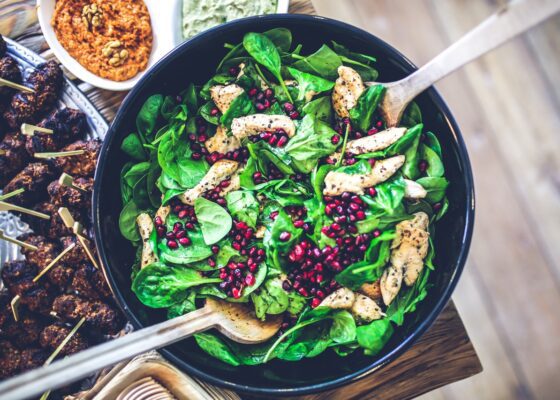
Traditional pizza is not low-carb, containing 20-30 grams of carbohydrates per slice primarily from its wheat-based crust. While cheese and meat toppings contribute minimal carbs, the crust and sauce can quickly consume a significant portion of a low-carb diet's weekly allowance. However, alternatives like cauliflower crust (3g carbs), chicken crust (0g), and fathead dough (5g) make it possible to enjoy pizza while maintaining ketogenic or low-carb lifestyle goals.
Key Takeaways
- Traditional pizza is high in carbs, with regular crust containing over 30 grams per slice and thin crust around 20 grams.
- Store-bought pizza sauce often contains hidden sugars, adding significant carbs to the overall count.
- Low-carb alternatives like cauliflower crust (3g), chicken crust (0g), or Fathead dough (5g) offer substantial carb reductions.
- Cheese and meat toppings contribute minimal carbs, while vegetable toppings can be selected strategically for lower intake.
- Homemade pizza using alternative crusts and sugar-free sauce provides the best control over carb content.
Understanding Traditional Pizza Carb Content
When examining traditional pizza from a nutritional standpoint, the carbohydrate content presents a significant challenge for those following low-carb dietary plans. Traditional pizza crust contains more than 30 grams of carbs per slice, making it particularly problematic for individuals restricting their carbohydrate intake. Even seemingly healthier options, such as thin-crust varieties, still pack approximately 20 grams of carbs in each slice, while deep-dish alternatives can exceed these amounts substantially. The pizza sauce further compounds this issue, as most commercial versions contain added sugars that increase the overall carb count. For perspective, a single medium pizza from popular chains can consume nearly an entire week's worth of carbohydrate allowance on a low-carb diet, highlighting the importance of careful consideration when making dietary choices. Additionally, other high-carb foods like white bread and cooked white pasta should also be avoided on a keto diet, as they can quickly disrupt ketosis.
Breaking Down Pizza Components and Their Carbs
A thorough analysis of pizza's carbohydrate content requires examining each component separately, from the crust to the toppings and sauce.
While the crust typically contributes the bulk of carbohydrates, ranging from 30+ grams in traditional versions to just 0.5 grams in chicken-based alternatives, pizza sauce can be a surprising source of hidden carbs through added sugars.
The selection of toppings ultimately determines the final carbohydrate count, with meat and cheese options adding minimal carbs while vegetables and sweet additions like pineapple increase the total considerably.
Crust vs. Toppings Breakdown
Understanding pizza's carbohydrate content requires breaking down its components, starting with the most carb-heavy element: the crust.
Traditional pizza crusts contain approximately 30 grams of carbs per slice, while thin crust options still pack around 20 grams, making both challenging for those following a low carb diet.
For keto-friendly pizza alternatives, cauliflower crusts offer a notable reduction at 3 grams per slice, while chicken crusts provide an almost carb-free base at just 0.5 grams.
The carb count of pizza toppings varies considerably.
While cheese and most meat toppings contribute minimal carbohydrates, certain elements require careful consideration.
Pizza sauces may contain hidden sugars, and some vegetable toppings can add unexpected carbs to the final count, making topping selection essential for maintaining a low-carb approach.
Hidden Carbs in Sauce
Many pizza enthusiasts overlook the notable carbohydrate contribution from pizza sauce, which often harbors hidden sugars and unexpected carbs. Commercial pizza sauce can contain more than 10 grams of carbs per serving, with added sugars considerably increasing the overall carbohydrate content.
For those following a low-carb pizza diet, carefully reading nutrition labels is essential to identify hidden sweeteners like high fructose corn syrup. Specialty products, such as Nowt Poncys Pizza L'Amore, offer reduced sugar alternatives specifically designed for low-carb diets.
Alternatively, homemade pizza sauces provide better control over carbohydrate content, as they can be prepared using simple ingredients like crushed tomatoes and herbs without additional sweeteners. Standard serving sizes typically range from 3 to 7 grams of net carbs, depending on ingredients and preparation methods.
Low-Carb Pizza Base Alternatives
For those committed to reducing their carbohydrate intake, several innovative pizza base alternatives offer delicious solutions without compromising the enjoyment of this beloved dish.
Cauliflower crust leads the way with merely 3g of carbs per slice, while chicken crust provides an almost zero-carb option rich in protein. The versatile fathead dough, crafted from mozzarella, cream cheese, and almond flour, contains approximately 5g of carbs per slice while maintaining a satisfying, chewy texture.
Low-carb pizza crusts like cauliflower, chicken, and fathead dough deliver authentic pizza satisfaction while keeping carbohydrates minimal and protein high.
Health-conscious pizza enthusiasts can also explore zucchini crust or portobello mushroom bases, which add unique flavors and nutritional benefits despite requiring additional preparation time.
For those seeking convenience without sacrificing carb consciousness, Heylo Low-Carb Pizza Bases present a practical solution with just 3.7g of carbs per base, enabling a more traditional pizza experience.
Incorporating keto-friendly oils, such as olive or avocado oil, can enhance the flavor and nutritional value of your low-carb pizza creations.
Choosing Keto-Friendly Pizza Sauces
Selecting a suitable pizza sauce presents a significant challenge for keto dieters, as many commercial options contain hidden sugars that can quickly derail low-carb goals. While traditional store-bought pizza sauces often pack 10-15 grams of carbs per serving, health-conscious consumers can opt for specially labeled sugar-free varieties or create their own homemade versions using crushed tomatoes and herbs. Making sauce from scratch allows precise control over carbohydrate content, enabling pizza enthusiasts to maintain ketosis while still enjoying authentic Italian flavors through strategic use of ingredients like erythritol for subtle sweetness. Additionally, keto-friendly sweeteners such as stevia and monk fruit can be used to enhance the taste without impacting blood sugar levels.
Homemade No-Sugar Sauce Options
While store-bought pizza sauces often contain hidden sugars that can derail a low-carb diet, creating homemade alternatives offers complete control over carbohydrate content. A basic keto-friendly sauce can be crafted using simple ingredients like crushed tomatoes, olive oil, garlic, and Italian herbs, resulting in a flavorful base with minimal carbs.
For those missing the traditional sweetness of pizza sauce, incorporating sugar alternatives like erythritol can provide the desired taste without compromising ketosis.
While making homemade sauce requires more effort than purchasing pre-made options, the ability to control ingredients makes it an ideal choice for maintaining strict carb limits.
When time constraints make homemade preparation impractical, carefully selected commercial alternatives like Nowt Poncys Pizza L'Amore can serve as convenient substitutes, provided the ingredient list is thoroughly reviewed.
Store-Bought Low-Carb Alternatives
A growing number of manufacturers now produce keto-friendly pizza sauces that contain minimal carbohydrates and no added sugars, making them suitable alternatives for low-carb dieters.
When shopping for store-bought options, consumers should carefully check labels for products containing 2 grams of carbs or less per serving, specifically looking for low-sugar or no-sugar-added varieties.
While homemade pizza sauce offers complete control over ingredients, several commercial brands now cater to the low-carb market with specially formulated alternatives.
These keto-friendly options typically feature simple ingredients like crushed tomatoes and herbs, avoiding common additives that can increase carbohydrate content.
Some brands even incorporate sugar alternatives like erythritol to maintain traditional flavor profiles while keeping carb counts minimal, providing convenient options for those maintaining ketogenic lifestyles.
Hidden Sauce Carb Culprits
Hidden carbohydrates lurking in pizza sauces can derail even the most carefully planned low-carb diet. Many store-bought varieties contain hidden sugars that exceed 10 grams of carbs per serving, making them incompatible with a keto diet.
Careful examination of nutrition labels reveals that seemingly innocent pizza sauce can greatly impact daily carb intake.
To maintain a low-carb lifestyle while enjoying pizza, consumers have several options:
- Choose specialized brands like Nowt Poncys Pizza L'Amore that offer low-sugar alternatives
- Create homemade sauce using crushed tomatoes, herbs, and carb-friendly sweeteners
- Limit sauce portions to guarantee carb content stays below 5 grams per serving
Understanding these hidden carb sources empowers individuals to make informed choices about their pizza sauce selection, whether opting for carefully vetted commercial products or preparing their own keto-friendly alternatives.
Best Cheese Options for Low-Carb Pizza
Selecting the right cheese plays an essential role in creating delicious low-carb pizzas while maintaining ketogenic or low-carb dietary goals.
Shredded mozzarella cheese stands out as a top choice, containing only 1 gram of carbs per ounce while offering superior meltability. Cheddar cheese adds a sharp flavor dimension with even fewer carbs at 0.4 grams per ounce, while Parmesan contributes a nutty, salty element with just 0.9 grams of carbs per ounce.
For the perfect low-carb pizza, combine shredded mozzarella's meltability with cheddar's sharpness and Parmesan's nutty complexity, all while keeping carbs minimal.
While fresh mozzarella can enhance flavor, it should be used sparingly to prevent excess moisture from compromising the crust's texture. Hard cheeses like Parmesan and Swiss are low in carbs and provide rich flavor profiles, making them excellent choices for keto-friendly pizzas.
It's important to avoid pre-made cheese blends, which often contain hidden carbohydrates and unnecessary additives that can increase the overall carb content of your low-carb pizza.
Smart Topping Selections to Minimize Carbs
Making thoughtful topping choices greatly influences the carbohydrate content of any low-carb pizza creation. Smart topping selections should focus on low-carb vegetables like bell peppers, spinach, and mushrooms, while avoiding starchy options such as corn and potatoes. Cheese varieties including mozzarella, cheddar, and parmesan provide flavor without adding unnecessary carbs.
When selecting toppings, consider these key guidelines:
- Choose lean meats like pepperoni and grilled chicken, avoiding those with sweet marinades.
- Incorporate nutrient-rich vegetables such as zucchini and spinach for added nutritional value.
- Skip high-sugar fruits like pineapple, which can markedly increase carbohydrate content.
Adding healthy oils like olive oil can enhance flavor while maintaining a low-carb profile.
These strategic choices guarantee a delicious pizza that maintains its low-carb status while delivering satisfying flavor and essential nutrients.
Homemade vs. Store-Bought Low-Carb Pizza
The ingredients chosen for homemade low-carb pizza greatly impact its nutritional profile, with options like almond flour and cauliflower crusts offering superior carb control compared to store-bought alternatives. Creating low-carb pizzas at home requires minimal preparation time when utilizing efficient assembly techniques, such as pre-measuring ingredients and preparing crusts in advance. While store-bought low-carb pizzas may seem convenient, making pizzas at home proves more economical and allows for batch preparation, ensuring healthier meals are readily available throughout the week. Additionally, incorporating healthy fats like olive oil or avocado into your homemade pizza can enhance flavor and nutritional value, contributing to a more satisfying dining experience.
Ingredients Make Big Difference
When choosing between homemade and store-bought low-carb pizza options, ingredients play an essential role in determining the final carbohydrate content and nutritional value.
Homemade low-carb pizza offers superior control over ingredients, allowing for customization with alternatives like almond flour crusts and carefully selected low-carb toppings. Store-bought varieties often contain hidden sugars and unnecessary additives that can compromise dietary goals.
Key factors that make homemade low-carb pizza superior include:
- Complete control over crust ingredients, enabling use of low-carb alternatives
- Ability to select fresh, carb-conscious toppings without processed additives
- Freedom to experiment with sugar-free sauce alternatives
The significant difference in carbohydrate content between homemade and store-bought options can range from 2-5 grams per slice for homemade versions to over 30 grams for commercial alternatives.
Quick Assembly Tips
Several proven assembly techniques can streamline the process of creating low-carb pizzas, whether using store-bought bases or homemade alternatives. For peak efficiency, utilizing pre-cooked bases, such as Heylo Low-Carb Pizza Bases containing just 3.7g of carbs, can reduce preparation time to approximately 15 minutes.
The assembly process becomes straightforward when starting with a sugar-free sauce made from crushed tomatoes and herbs, followed by a generous layer of mozzarella cheese and other keto-friendly toppings.
While homemade crusts using almond flour or cauliflower offer customization options, store-bought alternatives provide convenience without compromising nutritional goals.
Regardless of the chosen base, maintaining organized ingredients and having pre-shredded cheese readily available guarantees a quick, satisfying low-carb pizza experience.
Cost-Saving Meal Prep
Making conscious choices between homemade and store-bought low-carb pizzas can greatly impact both dietary success and financial well-being. A homemade low-carb pizza recipe offers significant cost savings compared to premium-priced store alternatives, often costing just a fraction per serving.
When following a keto pizza recipe, home preparation allows for complete control over ingredients and nutritional content.
Key benefits of preparing healthier recipes at home include:
- Ability to customize toppings and experiment with various low-carb crusts
- Cost-effective bulk purchasing of ingredients like almond flour and cheese
- Better control over hidden sugars and carbohydrates in sauces and toppings
Calculating Net Carbs in Your Pizza
Understanding how to calculate net carbs in pizza enables individuals to make informed decisions about their dietary choices. To determine net carbs, subtract the fiber content from total carbohydrates listed on nutrition labels. Traditional pizza crusts contain markedly higher net carbs compared to keto-friendly alternatives, making them challenging for those following low-carb diets.
| Pizza Component | Standard Net Carbs | Low-Carb Options |
|---|---|---|
| Crust | 30+ g/slice | 3-5 g/slice |
| Sauce | 4-8 g/slice | 1-2 g/slice |
| Toppings | 0-10 g/slice | 0-2 g/slice |
When calculating net carbs, pay special attention to pizza sauces, which often contain hidden added sugars. While cheese and meat toppings contribute minimal carbs, starchy vegetables can greatly increase the overall carb content. Including nutrient-dense vegetables such as broccoli or cauliflower as toppings can enhance the nutritional value of your pizza while keeping carb content low.
Popular Low-Carb Pizza Recipes
As the demand for low-carb alternatives continues to rise, creative pizza recipes have emerged to satisfy cravings while maintaining dietary goals. Among the most popular low-carb pizza recipes, traditional favorites have been reimagined using innovative ingredients and preparation methods.
Several standout keto-friendly options include:
- Classic Margherita featuring fresh mozzarella on cauliflower crust
- Cheeseburger pizza topped with ground beef and pickles
- Buffalo chicken pizza with spicy sauce and shredded chicken
These alternatives utilize low-carb bases while maintaining the satisfying flavors of traditional pizzas.
The Margherita variation showcases the versatility of cauliflower crust, while meat-focused options like the cheeseburger and buffalo chicken pizzas provide protein-rich alternatives.
Additional variations include pesto chicken and pepperoni pizzas, demonstrating that following a low-carb diet doesn't mean sacrificing favorite comfort foods. Additionally, incorporating healthy fats such as olive oil and avocado into these recipes enhances flavor and promotes satiety.
Restaurant Guidelines for Low-Carb Pizza Orders
While dining out poses unique challenges for those following a low-carb lifestyle, ordering pizza at restaurants can be manageable with the right approach and specific guidelines.
The first step is selecting an alternative crust, such as cauliflower or chicken-based options, which contain considerably fewer carbohydrates than traditional dough.
When it comes to sauce, request low-sugar or homemade varieties to minimize hidden carbs.
Careful selection of toppings plays an essential role in maintaining a low-carb pizza experience; opt for meats, cheese, and non-starchy vegetables while avoiding high-sugar ingredients like pineapple.
Many establishments now accommodate dietary preferences by offering keto-friendly menu items, and some will even double up on cheese or protein as a crust substitute, making it easier to enjoy pizza while adhering to low-carb requirements.
For those with diabetes, stable blood sugar levels are crucial, which can be achieved by making informed dietary choices while enjoying restaurant meals.
Tips for Making Pizza Part of Your Low-Carb Lifestyle
Incorporating pizza into a low-carb lifestyle requires strategic planning and thoughtful modifications to traditional recipes. Selecting a low-carb crust alternative, such as cauliflower or chicken-based options, forms the foundation for a satisfying, carb-conscious meal. Creating homemade pizza sauce from crushed tomatoes guarantees control over sugar content, while choosing low-carb toppings like cheese and non-starchy vegetables maintains nutritional goals. Key strategies for low-carb pizza success include: Monitoring portion sizes to prevent carbohydrate accumulation, exploring crustless pizza variations using ground meat bases, and customizing toppings with high-protein options while avoiding sugar-rich ingredients. For those following a keto diet, almond flour can be used as a key ingredient in low-carb crust recipes, providing nutritional benefits while keeping carb content low.
Frequently Asked Questions
Can I Have a Slice of Pizza on a Low-Carb Diet?
Traditional pizza isn't low-carb friendly, but dietary flexibility allows enjoyment through portion control, low-carb alternatives like cauliflower crust, homemade recipes, and focusing on pizza toppings rather than carb-heavy crusts.
Will One Piece of Pizza Kick Me Out of Ketosis?
One slice of traditional pizza can disrupt ketosis effects due to high carb content. Smart meal planning suggests choosing pizza alternatives like cauliflower crust to maintain ketosis while managing cravings and carb counting.
What Kind of Pizza Is Low-Carb?
Low-carb pizza varieties include cauliflower crust, almond flour-based dough, and zucchini boats topped with cheese. These alternatives, paired with keto toppings, maintain the pizza experience while minimizing carbohydrate content.
Will 2 Slices of Pizza Kick Me Out of Ketosis?
Two regular pizza slices typically disrupt ketosis effects due to high carb content. Instead, focus on pizza alternatives with keto-friendly crusts and low-carb toppings while carefully monitoring carb counting.
Conclusion
Traditional pizza may be high in carbohydrates, but incorporating low-carb alternatives and mindful choices makes it possible to enjoy this beloved dish while maintaining dietary goals. By selecting cauliflower or almond flour crusts, sugar-free sauces, and appropriate toppings, pizza enthusiasts can reduce their carb intake notably. Whether dining out or preparing homemade versions, understanding pizza components and making informed substitutions allows for satisfying, health-conscious meals without sacrificing flavor.









No Comments